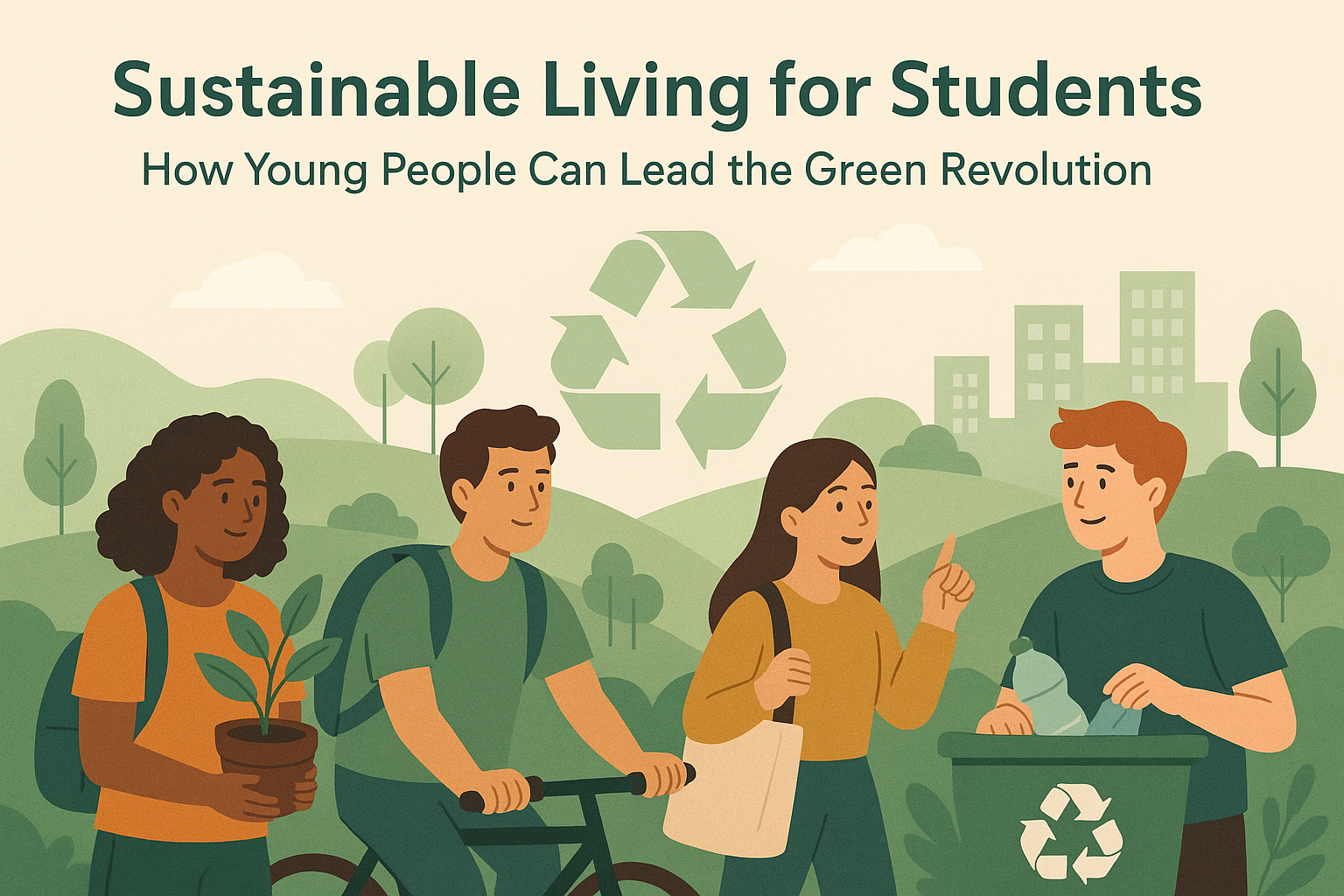


Last updated on: October 29, 2025
6 Views
Yuvika Rathi
College Student

Sustainability is not just a lifestyle choice — it’s a necessity. Climate change, waste generation, and pollution are challenges our generation must solve collectively. And students, with their awareness, energy, and innovation, are at the heart of this global shift. Across Indian campuses and beyond, young people are reimagining sustainability — through eco-clubs, zero-waste projects, renewable energy drives, and sustainable startups.
A report by UNEP (United Nations Environment Programme) highlights that youth movements are among the strongest forces accelerating the transition to sustainable economies. (unep.org)
In India, this youth-driven transition is visible through campus initiatives like IIT Delhi’s “Green Warriors” campaign and TISS Mumbai’s Sustainable Campus project, both integrating renewable energy and waste reduction strategies.
Sustainable living means using resources responsibly so future generations aren’t deprived. For students, this translates into:
Essentially, it’s a mindset of conscious consumption combined with daily actions.
Example: Delhi University’s Eco-Club runs an annual “Trash to Treasure” exhibition showcasing recycled art and upcycled materials. (du.ac.in)
Fast fashion is one of the biggest pollutants. Students can:
Example: The Indian Institute of Art and Design students collaborated with SustVest to make fashion truly circular — every design reused or repurposed. (sustvest.com)
Case Study: Anna University’s Solar Campus Initiative saved 20 % of its annual electricity cost by installing rooftop solar. (energy.economictimes.indiatimes.com)
Example: IIT Madras’s mess halls implemented food-waste monitoring and composting units — turning organic waste into manure for gardens. (iitm.ac.in)
Example: Amity University Noida launched its e-bike rental project, encouraging eco-mobility and reducing carbon emissions. (amity.edu)
For reference: Ministry of Environment, Forest and Climate Change (MoEFCC) supports Eco-Clubs under the National Green Corps (NGC). (moef.gov.in)
Example: Enactus India funds student teams that create business models combining sustainability and social impact. (enactusindia.org)
Reference: IIT Guwahati introduced a “Sustainability Credit System” allowing students to earn credits for eco-activities. (iitg.ac.in)
7. Everyday Green Habits for Students
| Category | Small Changes = Big Impact |
| Study Materials | Use digital notes, refill pens, and recycled paper. |
| Hostel Life | Carry reusable utensils, use natural cleaning products. |
| Commute | Use cycles, public transport, or car-pool. |
| Food | Say no to plastic cutlery and packaging. |
| Events | Plan sustainable fests — eco-decor, digital invites. |
| Tech | Donate old gadgets to e-waste drives. |
8. Challenges & How to Overcome Them
| Challenge | Solution |
| Lack of awareness | Conduct workshops, eco-talks, visual campaigns. |
| High initial cost | Focus on small-scale low-cost actions (recycling, composting). |
| Lack of support from institutions | Form student sustainability councils to push policy changes. |
| Short project lifespan | Document, share, and recruit juniors to continue initiatives. |
The next decade belongs to climate-conscious innovation. Students who combine knowledge, activism, and entrepreneurship will drive industries to adopt sustainable models. With India’s National Education Policy (NEP 2020) promoting environmental awareness and sustainability learning, academic institutions now have a framework to make green thinking mainstream. (education.gov.in)
Students are the pulse of the green revolution. Every small action — every bottle reused, every tree planted, every peer inspired — creates ripples of change. Sustainability isn’t about perfection; it’s about intention and consistency. As students integrate eco-habits into study, lifestyle and career, they not only preserve the planet but also shape a generation that thrives responsibly.
“The Green Revolution 2.0 will not come from politics alone — it will begin in classrooms, hostels and student movements.”